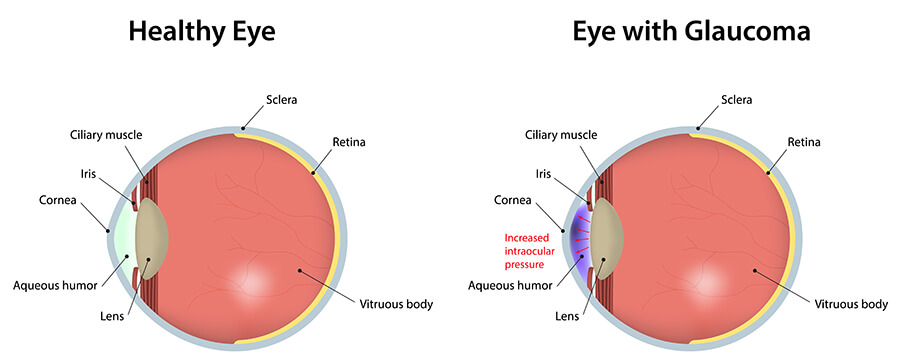Locate the very best Glaucoma Service Near Me: Premier Eye Specialists
Locate the very best Glaucoma Service Near Me: Premier Eye Specialists
Blog Article
Recognizing the Different Vision Improvement Procedures Available for Clearer View
In the realm of vision modification treatments, a plethora of choices exist to deal with refractive errors and offer people with clearer sight. Let's check out the details of these treatments and dropped light on the path to achieving improved vision quality.
LASIK Surgical Procedure
LASIK surgery is a common refractive treatment made use of to remedy vision issues such as astigmatism, farsightedness, and nearsightedness - retina service near me. This medical technique, which represents Laser-Assisted sitting Keratomileusis, aims to improve the cornea to boost exactly how light is concentrated on the retina, inevitably improving vision clarity. During the procedure, a slim flap is produced on the cornea, and a laser is made use of to get rid of precise quantities of cells to improve it appropriately. This reshaping enables light to be accurately concentrated onto the retina, remedying refractive mistakes.
Among the main advantages of LASIK surgical procedure is the fast improvement in vision experienced by clients. Several individuals see a significant enhancement in their eyesight promptly after the treatment. Additionally, the majority of people report marginal discomfort and discomfort during the surgical procedure and recuperation duration. The recovery time for LASIK is relatively fast, with many individuals going back to their everyday tasks within a day or 2 post-operation. Overall, LASIK surgical treatment is a prominent option for individuals looking for a lasting remedy for their vision troubles.
PRK Procedure
While additionally a common refractive treatment, the PRK (Photorefractive Keratectomy) method differs from LASIK surgical procedure in its strategy to remedying vision troubles. In PRK, instead of creating a flap on the cornea, the external layer of the cornea, called the epithelium, is completely gotten rid of. This allows the laser to improve the cornea to remedy refractive mistakes such as nearsightedness, farsightedness, and astigmatism directly on the surface.

Regardless of the longer recuperation time, PRK can yield outstanding lead to vision renovation, making it an important option for those that might not appropriate prospects for LASIK surgical procedure.
Implantable Lenses
In comparison to PRK where the cornea is reshaped directly, implantable lenses offer another method for fixing vision by placing fabricated lenses inside the eye. This treatment is specifically helpful for individuals with high degrees of farsightedness, nearsightedness, or astigmatism who might not be suitable candidates for laser surgeries like LASIK or PRK.
Implantable lenses, also understood as phakic intraocular lenses, work by supplementing the eye's all-natural lens with a fabricated one. eyecare near me. These lenses can be positioned in front of the natural lens (former chamber) or behind the iris check my reference and before the all-natural lens (posterior chamber) By changing the power and positioning of these lenses, ophthalmologists can effectively remedy refractive mistakes and enhance aesthetic skill
One advantage of implantable lenses is that they are removable and exchangeable, giving versatility for future changes. As with any type of surgical treatment, there are threats involved, such as infection or cataract development. People thinking about implantable lenses should speak with an eye care expert to establish the most ideal choice based upon their individual requirements and eye health.
Corneal Rings
Corneal rings, likewise referred to as intracorneal ring sections, are tiny, transparent tools put into the cornea to remedy vision distortions such as keratoconus. Keratoconus is a condition where the cornea navigate here thins and protrudes outward, creating vision to become distorted. The insertion of corneal rings aids to flatten the cornea, enhancing aesthetic acuity and lowering the uneven astigmatism triggered by keratoconus.
The procedure for putting corneal rings is fairly fast and minimally intrusive, commonly done as an outpatient treatment. During the surgical treatment, the ophthalmologist makes a little laceration in the cornea and inserts the rings at a details depth. As soon as in location, the rings aid to reshape the cornea, offering a smoother surface area for light to get in the eye, which can result in clearer vision.
Corneal rings are considered a relatively easy to fix treatment, as they can be removed or replaced if essential. refractive surgeries in al. While they may not completely get rid of the need for glasses or call lenses, corneal rings can significantly improve vision quality and total visual comfort for individuals with keratoconus or other corneal abnormalities
Refractive Lens Exchange
Following the correction of corneal irregularities with treatments like corneal rings, another vision correction technique that can deal with refractive mistakes is Refractive Lens Exchange (RLE) RLE is a surgery that includes changing the eye's all-natural lens with a fabricated intraocular lens (IOL) to deal with refractive mistakes such as farsightedness, nearsightedness, and presbyopia. This treatment is especially advantageous for individuals that might not be appropriate candidates for procedures like LASIK or PRK as a result of factors such as slim corneas or high refractive errors.

Conclusion
In conclusion, there are various vision correction procedures offered to assist individuals accomplish clearer view. LASIK surgery, PRK procedure, implantable lenses, corneal rings, and refractive lens exchange are all alternatives that can resolve various vision concerns.
In the world of vision improvement treatments, a wide range of alternatives exist to attend to refractive errors and offer individuals with clearer view.LASIK surgical procedure is an usual refractive treatment utilized to correct vision problems such as astigmatism, farsightedness, and nearsightedness.While likewise a common refractive procedure, the PRK (Photorefractive Keratectomy) technique varies from LASIK surgical procedure in its method to remedying vision problems.Adhering to the improvement of corneal irregularities with treatments like corneal rings, another vision adjustment method that can address refractive mistakes is Refractive Lens Exchange (RLE) LASIK surgery, PRK treatment, implantable lenses, corneal rings, and refractive lens exchange are all alternatives that can attend to different vision concerns.
Report this page